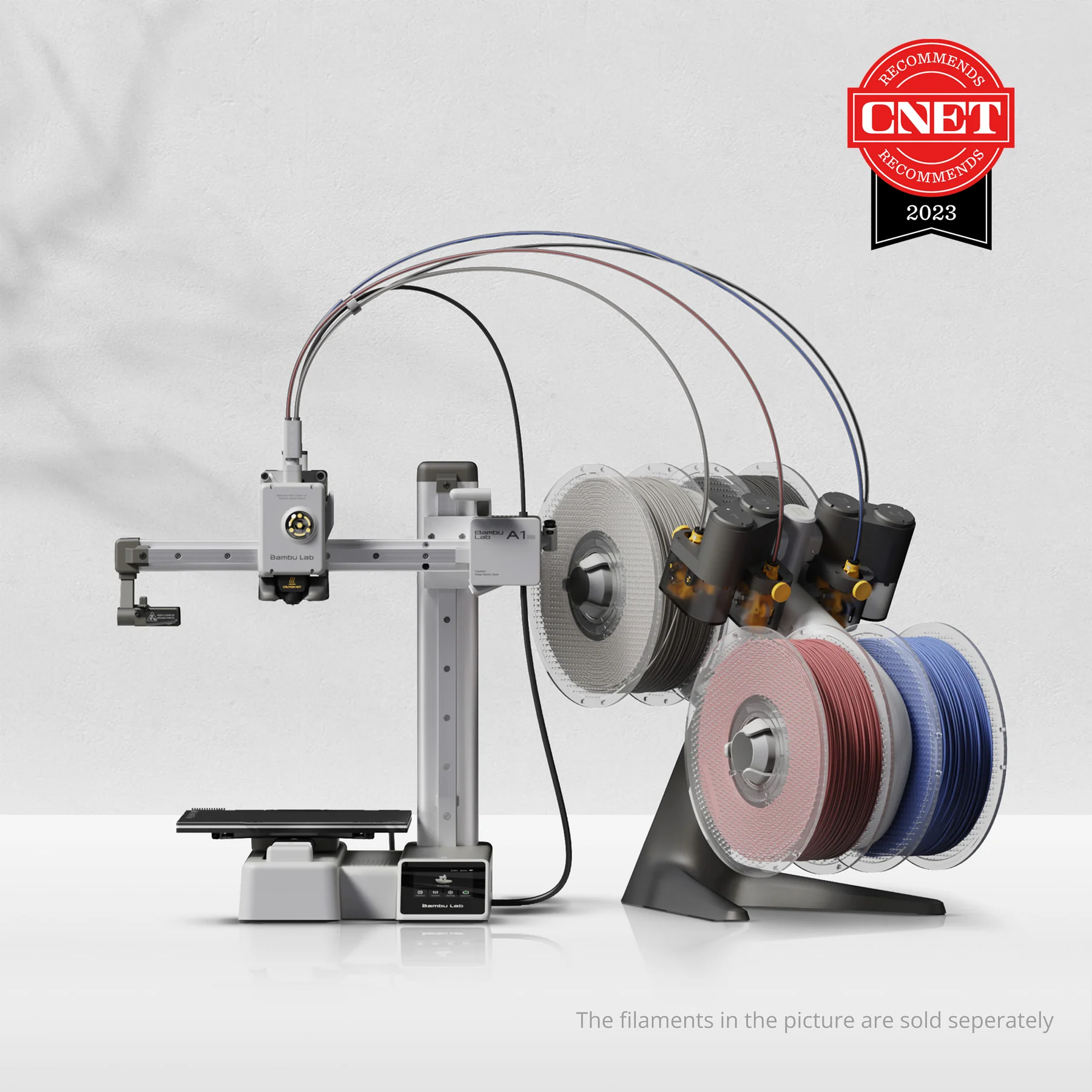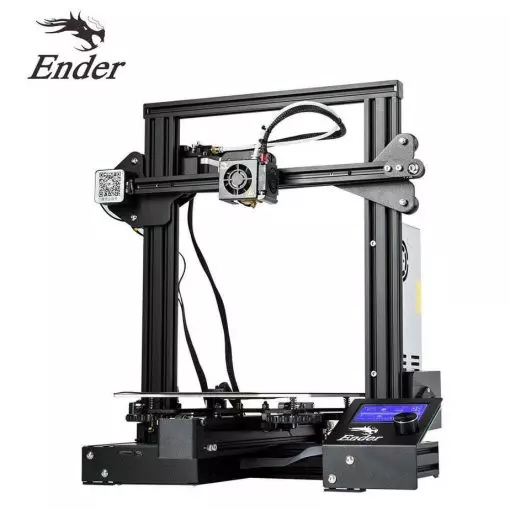Compare A1 Mini vs Ender 3
Comparison between the best 3D printers
Choose the best 3D printer at the best price. The cheapest 3D printers are here.
Buy a 3D printer here with 3D Fila.
 |
 |
|
| Model | A1 Mini |
Ender 3[BUY Ender 3] |
| Printing Material | Filament | Filament |
| Buy Filament for Bambu Lab A1 Mini | Buy Filament forCreality 3D Ender 3 | |
| Estimated price | $549,00 | $210,00 |
| Manufacturer | Bambu Lab | Creality 3D |
| Release Year | 2023 | 2018 |
| Print Volume [mm] | 180x180x180 | 220x220x250 |
| Printer Size [mm] | 315x347x365 | 440x440x465 |
| Weight [kg] | 5,5 | 6,62 |
| Power Loss Recovery | YES | NO |
| Enclosed printer | NO | NO |
| Bed Leveling | Automatic | Manual |
| Filament End Sensor | YES | NO |
| Bed type | Heated | Heated |
| Power supply system | Direct Drive | Bowden |
| Standard nozzle | 0,4 | 0,4 |
| Maximum Nozzle Temperature [°C] | 300 | 255 |
| Maximum Bed Temperature [°C] | 80 | 110 |
| Maximum printing speed [mm/s] | 500 | 180 |
| Filament holder | YES | YES |
| Camera for supervision | YES | YES |
| Recommended filaments | PLA, PETG, TPU, PVA | PLA, TPU, ABS, PETG |
| Recommended slicers | Bambu Studio, Super Slicer, Cura, Prusa Slicer, Orca | Cura, Simplify, Slic3r |
| Maximum Resolution [mm] | 0,1 | 0,1 |
| Processor | 32-bit Silenciosa | 8 bits |
| Display | Touchscreen 2,4'' | Mono |
| Power Supply | 150 W | 24V / 270W |
| Connectivity | Wifi, Bambu bus, Cartão SD | SD / USB |
| Operating systems | Windows, Linux, Macbook | Windows, Mac, Linux |
| Date of registration in the system | 2024-04-10 | 2021-04-13 |
| Release date | 2023 | 2018 |
| Extra features | The Bambu Lab A1 Mini stands out not only for its impressive speed and automatic calibration, but also for its multi-color printing capability thanks to AMS Lite. This innovative system makes multi-color printing easy, making it accessible to everyone. AMS Lite, specific to the A1 Mini, supports up to four different materials simultaneously, providing creative freedom without complications. With comprehensive sensors for energy monitoring and recovery, a camera for timelapses and Wi-Fi control, the A1 Mini and AMS Lite together offer an intuitive and advanced 3D printing experience, ideal for materials such as PLA, PETG and TPU, and designed for simplicity and fast maintenance with quick-change nozzles. | The Ender 3 V1 is a DIY assembly 3D printer, a sales leader since 2017, standing out for its cost-benefit. With a wide printing capacity, it has a CNC machined structure for precision and stability. It offers high-precision prints with low noise, thanks to its innovative V-profile and pulleys. It has a self-adhesive magnetic platform for easy removal of models and excellent adhesion. The Ender 3 heats up quickly, reaching 100°C in 5 minutes, ideal for agile prints. It includes protection against power failures, allowing you to resume printing after interruptions, saving time and material. |
| Support for multiple colors and materials (AMS and CFS) | YES | NO |
Notes * |
||
| Cost-benefit | 7 / 10 | 6 / 10 |
| Hardware | 4.8 / 10 | 0.5 / 10 |
| Tela | . | . |
| Print volume | 3 / 10 | 3 / 10 |
| Performance | 4 / 10 | 1 / 10 |
| [BUY Ender 3] |
Conclusion |
| In conclusion, the comparison between the Bambu Lab A1 Mini and the Creality 3D Ender 3 reveals distinct strengths and weaknesses that cater to different user needs in the 3D printing market. The Bambu Lab A1 Mini, released in 2023, is a more technologically advanced printer featuring automatic bed leveling, a direct drive filament system, and impressive maximum printing speeds. Its capabilities extend to multi-color printing with the innovative AMS Lite system, which supports up to four different materials at once. With Wi-Fi connectivity, a user-friendly touchscreen display, and advanced sensors for power loss recovery and monitoring, the A1 Mini offers a modern, efficient, and intuitive printing experience. However, it comes at a higher price point, which might be a consideration for budget-conscious buyers. In contrast, the Ender 3, a well-established model since 2018, remains a favorite for those seeking a more affordable option without sacrificing too much on performance. This printer provides a reliable DIY assembly experience, solid print volume, and excellent adhesion with its magnetic platform. Although it lacks features like automatic calibration and multi-color capability, the Ender 3 compensates with a robust construction and satisfactory print quality. It also has power loss recovery as a fundamental attribute, albeit with a less advanced feature set overall. Ultimately, the choice between these two models hinges on the user's priorities. For those valuing advanced technology, speed, and versatility, the A1 Mini presents a compelling choice despite its higher cost. Conversely, for users appreciating a functional, budget-friendly 3D printer for basic needs, the Ender 3 remains a reliable classic. Both printers exhibit comparable cost-benefit ratios, indicating that each has its own value proposition worthy of consideration based on individual preferences and intended use. |

